By Barry Santini, OD, ABOM
Regardless of level of education, eventually every eyecare professional will want to refresh themselves regarding some technical aspect of their chosen career. For some, it will be relearning about image size and aniseikonia. For others, it might be about using a new or unfamiliar lensometer to ensure accurate lens readings and markings. Still others will want to bone up on the optics of wrapped and sport eyewear. In the old days—that’s pre-1990s, aka before the World Wide Web—just about every resource an optical person might access was available only in print. That meant not only would a copy have to exist somewhere nearby, but you’d have to remember where it was kept. Further, finding the information needed often meant quite a bit of time lost as you thumbed through the book you thought it was located in.
Today, it’s a far different story. ECPs are blessed with the convenience of Internet search to help find all sorts of truly fantastic apps, written by both talented peers and customer-focused companies. With just about everything optical available at your fingertips, why don’t we see more discussions about these terrific resources?
The reasons are interesting:
- The majority of experienced and expert individuals in the optical field today did not grow up in an online age.
- The younger opticians who grew up with online are often not aware about these resources.
- Both generations are guilty of winging it rather than refreshing themselves when confronted with challenges to their mental cobwebs.
With easy access to uploaded PDFs of printed texts, sophisticated apps that can calculate just about anything you might want to calculate and a vast community of like-minded professionals in the arenas of social media, today is clearly the golden age of access to all the optical knowledge you could ever hope for. Let’s take an in-depth look at the current resources available to the curious ECP.
OPTICAL APPS AND CALCULATORS
Opticampus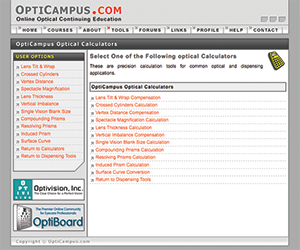
Combining both educational and explanatory texts along with some truly powerful optical calculators, the late Darryl Meister’s Opticampus site was one
of the first websites dedicated to delivering ECPs the tools and texts that could assist them every day.
opticampus.opti.vision/tools/calculators.php
opticampus.opti.vision/files/ (Zeiss Program)
opticampus.opti.vision/files/introduction_to_ophthalmic_optics.pdf
Optical Tool
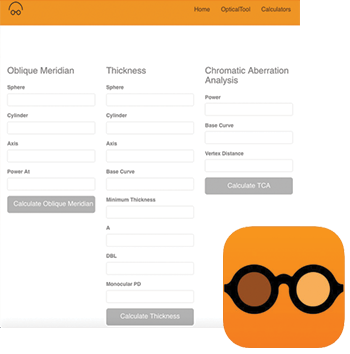
This comprehensive app, written by optician Brent McCardle, covers everything from calculating image locations to seeing the effects of varying center of rotations on peripheral image quality. Lab geeks will relish his most recent additions to the app, which can help calculate both the correct PD when blocking wrap eyewear as well as seeing the effects of prism when frames are curved around the bridge.
brent-mccardle.org/calculators.html
brent-mccardle.org/optical-tool.html
Opticianworks
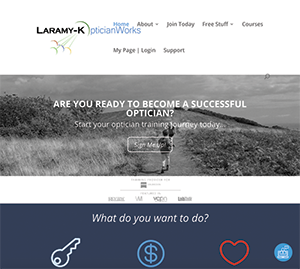
Optician John Seegers, seeing the lack of college-level opportunities facing most opticians, started Opticianworks in 2008. The optical laboratory Laramy K, run by Keith and Janet Benjamin, knew that having their optical customers be fully conversant with subjects ranging from lens impact testing to how to choose a progressive corridor would benefit from John’s pioneering work. In 2015, they joined forces with John on the Laramy K website. John’s easy-to-follow videos on all things optical are a premium resource for all opticals.
opticianworks.com
Chadwick Optical
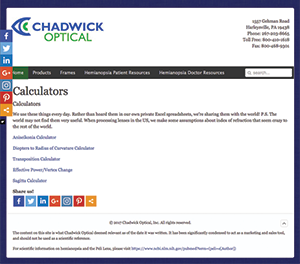
In addition to some fine and easy-to-use optical calculators, optician Charlie Saccarelli’s company’s Web pages feature unique calculators for understanding and making spectacles for stroke patients suffering from hemianopsia—a condition where the binocular fields of vision are often cut in half, effectively reducing the normal 180-degree field of view to just over 90 degrees.
chadwickoptical.com/calculators
Lens-Shapers
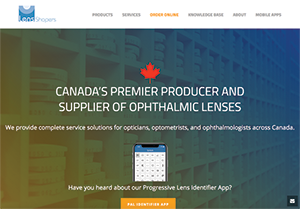
Now that you’ve sold the glasses and chosen the lenses, the next step is to order and verify the finished eyewear. But that requires an almost encyclopedic knowledge of a fast-changing universe of lenses, materials and designs. Canada’s Lens-Shapers site has exactly what you’ll need: a dynamic progressive identifier lookup, a table of fitting metrics for all current designs and a table of accurate abbe values for all material indexes. A truly worthwhile site to bookmark, as you’ll no doubt access it every day.
lens-shapers.com
Vision Council Progressive Identifier
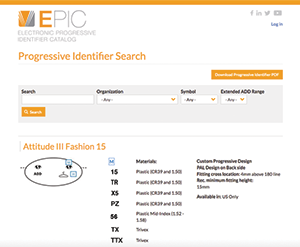
The Vision Council also maintains a dynamic progressive look-up identifier. It is easy to use, contemporary and robust in content.
epic.thevisioncouncil.org/progressive-identifier-search
ABO-NCLE Simulators
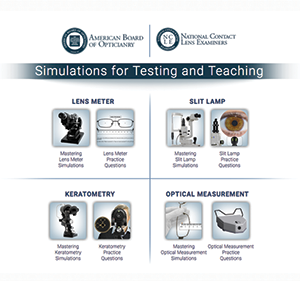
Every successful optical business faces the task of training new hires. The ABO-NCLE “skill simulators” are essential for ensuring consistent levels of familiarity and mastery for all tech personnel. Ranging from trainings in using a lensometer to slit lamp, these certified simulators are terrific for all employees, even those without a direct need for these hard skills.
purcellexchange.com/abo-practice-area_v2
Myopia Management
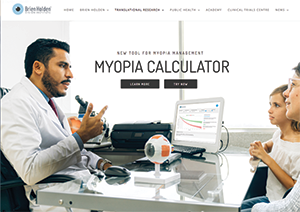
The Brien Holden Institute, arguably the world’s leading authority on managing the onset and progression of childhood myopia, has several clever and interesting tools to help assess the risk of both a child’s myopic onset and a rate of fast progression. These and others tools are going to become essential in the growing worldwide effort to curb the increase of myopia emerging around the world.
brienholdenvision.org/translational-research/myopia/myopia-calculator.html
OPTICAL INFO
I am always on the lookout for unique and different optical informational references. Besides the apps and calculators noted above, there are also some excellent reference websites that are chock full of information important to any optician. Here are a couple of my favorites:
Telescope Optics
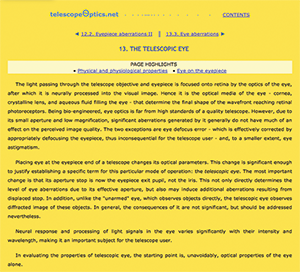
This is an extremely well written and comprehensive website. In addition to quite a bit of esoterica on telescopes and eyepieces, there are quite a few pages that are rich in references, diagrams and explanations on the human eye and its optics.
telescope-optics.net/eye.htm
Filmmaker IQ
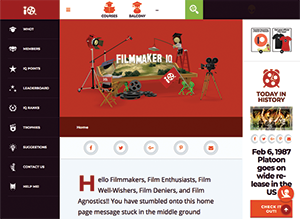
Although this site is mostly devoted to the art of film, there are some truly excellent and explanatory YouTube videos on subjects of interest to every eyecare professional, including field of view, perception, the importance of contrast, and the history and science of lenses.
filmmakeriq.com (You can also search for “Filmmaker IQ” on YouTube)

WHO YA GONNA CALL?
With all the great resources mentioned previously, you really shouldn’t have to call anybody: You can literally do it all yourself. And you should, because only through a strong and robust knowledge and skill base are local brick-and-mortar opticals going to be able to survive the intensifying commoditization of the Internet. The eyewear consumer needs real live experts and guides to help them sort through the overwhelming maze of products for every eyewear purchase. They know they want the best. The question is: Are you up to delivering it?
A DAY IN MY LIFE
Beyond the specific optical apps listed in this article, there are many resources, often little recognized, that not only can help you master the daily speed bumps encountered, they can transform your business from “need-passive” to what I call “want-active.” Need-passive is Rx/insurance focused. Want-active is desire/fashion/fit/repair focused. Cultivating want-active is liberating and is the future. Here’s how it might unfold.
My typical day at Long Island Opticians:
8:45 a.m. – Arrive at work. Retrieve messages. Get coffee.
9:00 a.m. – Open for business. Broken glasses and repairs surface immediately as the door opens. “Thank goodness you open early. I’ve got to get my glasses fixed right away, before I get to work.” Oftentimes these are not current clients, and their frames can be from lines we are not dealers for. But if they are from lines we carry, the next step is to see if parts are available. Luckily I’ve bookmarked my vendor B2Bs, and it’s short work to ascertain if parts are obtainable. If not, then it’s off to the discontinued boxes, where we often have to do our magic.
9:30 a.m. – Check vendor sites for job progress reports. These may be bookmarked on my computer or tablet browsers and include VisionWeb and DVI. Jobs that appear “stuck” may require a follow-up phone call to nudge them forward.
10 a.m. – Time to pool the orders requiring stock/finished lenses, both for individual Rx jobs and to restock lenses in our working inventory. One of the best sites to visit is Global Optics. Not only do they have a truly extensive listing of all types of spherical, aspheric, coated and photochromic lenses, Rx availability, blank diameter, cost and real-time stock status are all available on no more than two screens. Access can require signing up with a partner lab.
11:00 a.m. – Calls are arriving asking about replacement lenses for almost every type of plano sunglass. With a universe of styles to flog through, we ask for brand and model info. If this is difficult for a lay client to convey, we ask them to take a few pics with their cell phone and text them to our office cell phone. (Remember: Plano sunglasses and frames are not covered by HIPAA restrictions.) Opening a Google tab quickly lets us ascertain if we can order or edge a replacement pair.
12 p.m. – Time to place the few uncut surfaced Rx orders taken in that morning. As most of these are freeform single vision or progressive, they are straightforward to order on the appropriate vendor lens ordering portal. However, there is preparation involved for each order. Choices must be made regarding lens design, corridor length, base curve and material index/abbe. To help choose corridor, I often consult Lens-Shapers and The Vision Council Progressive Identifier Web pages. Further, when fitting SV, I’ll want to understand the chromatic effect that material abbe might have on distance or reading gaze. For this, I consult Darryl Meister’s Opticampus Chromatic Aberration in the Introduction to Ophthalmic Optics tutorials. When I’m worried about getting the base curve I desire and am unsure if a well-meaning but unwanted curve substitution might be made, I simply call lab customer service and have them run a test order to see what the system picks as a default and what curves will be considered an allowable substitute. At this point I also try to make sure any photochromic or AR treatments will be compatible with the chosen lens design and substrate. For this, the current manufacturer-supplied availability sheets are your best resource. If I have thickness or cutout concerns, the Opticampus calculators are my go-to tools.
1 p.m. – After lunch, there’s edging to be done. Invariably, there will be non-sunwear jobs that will contain frames of rimless or semi-rimless design, but feature steeper frame wrap angles of 8,10 or even 12 degrees. These must be compensated for blocking PD in order to have accurate final centration. Brent McCardle’s Optical Tool is superior here, featuring either monocular PD compensation and DBL adjustment values.
3 p.m. – Additional uncut surfaced work has arrived. Some jobs contain lenses that we don’t routinely process. If these lenses have manufacturer-specified fitting points that are vertically displaced from their prism reference points, this “drop”—as it is often informally referred to—must be known in advance of the finished blocking procedure. Again, here I may consult Lens-Shapers or the Digital Eyelab supplied Word-document for specific design drop values.
4:30 p.m. – Now that children are out of school, we are delivering, repairing and adjusting their glasses, all accompanied by one or more parents. These are ideal opportunities to inform and educate parents on the latest developments in myopia research and control, the importance of children spending time outdoors in sunlight as well as the latest research on the potential negative effects of too much screen time on the visual development of grade school children. Treehouse Eyes is an excellent Facebook page to begin their journey.
5:30 p.m. – Closing time. “What’s for dinner and what’s on TV tonight, hon?”
–BS
Contributing editor Barry Santini is a New York State licensed optician based in Seaford, N.Y.
Thanks to Brent McCardle of Carl Zeiss Vision for his help with this article.












